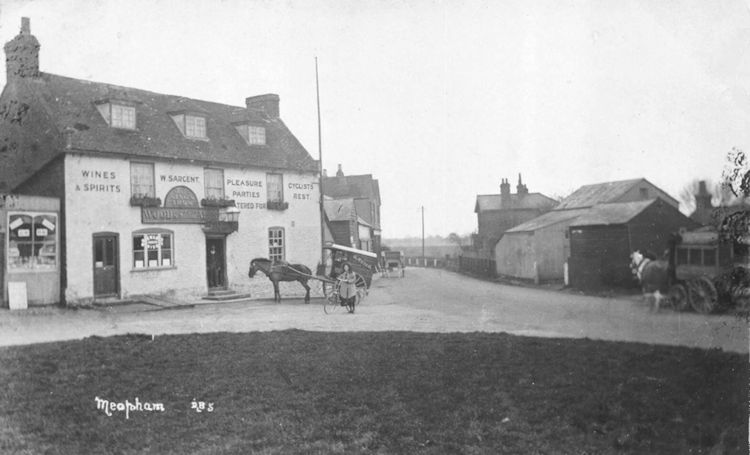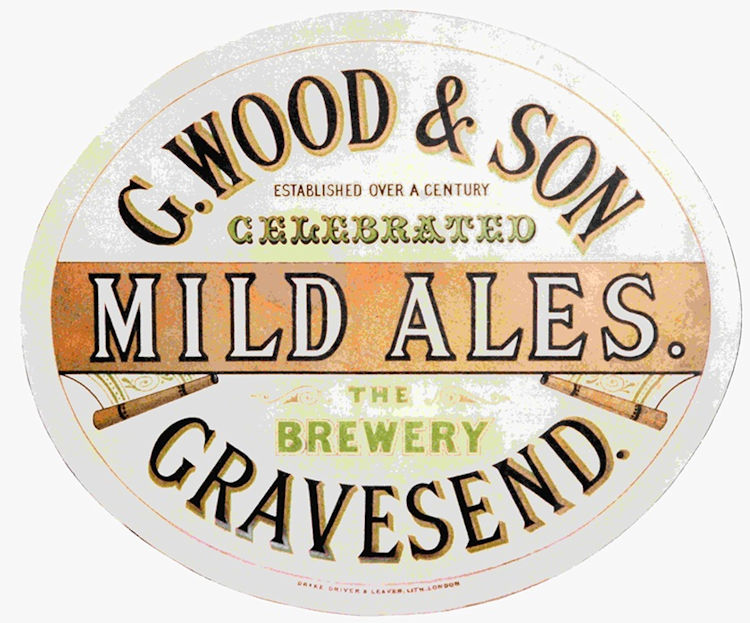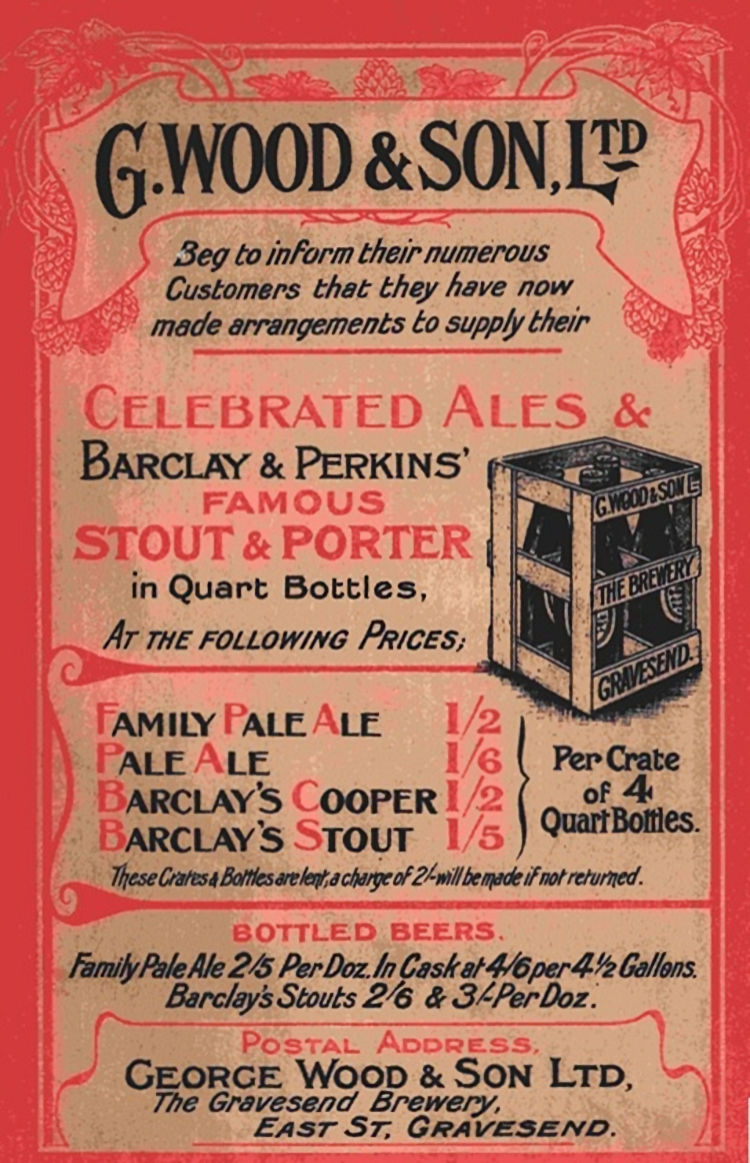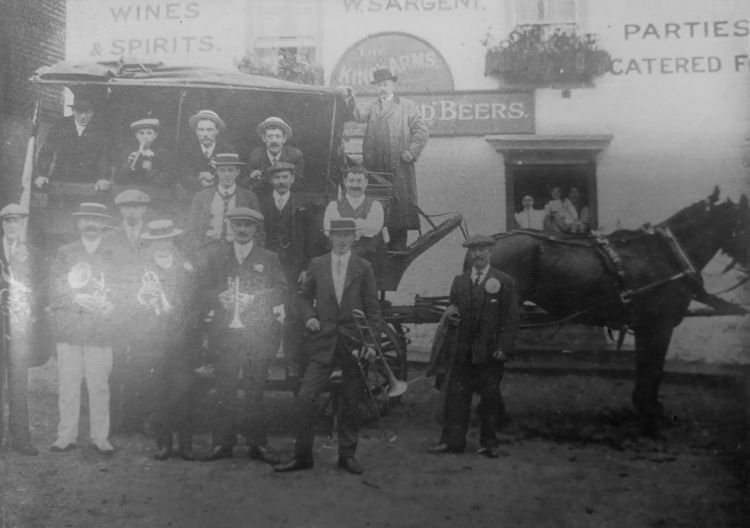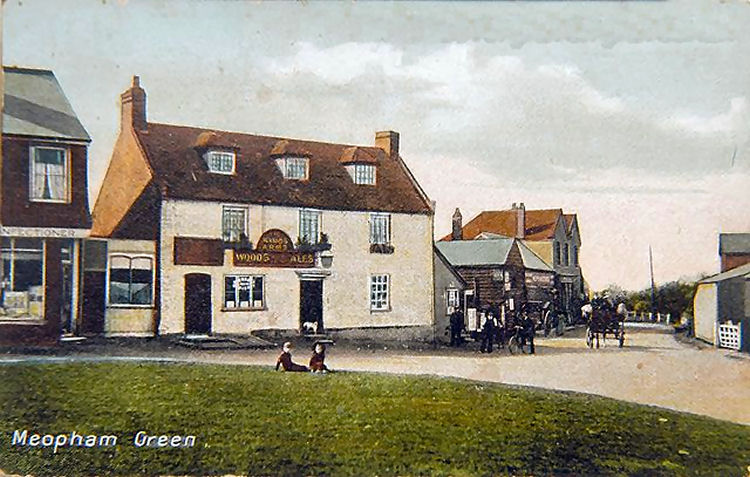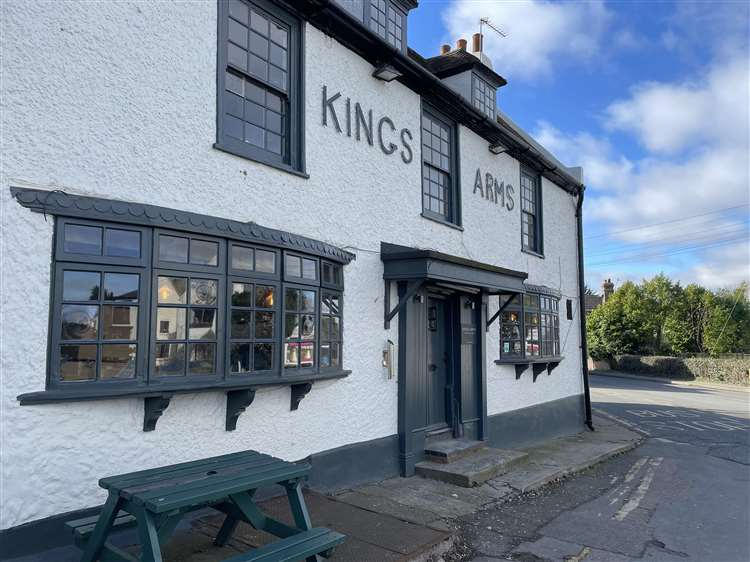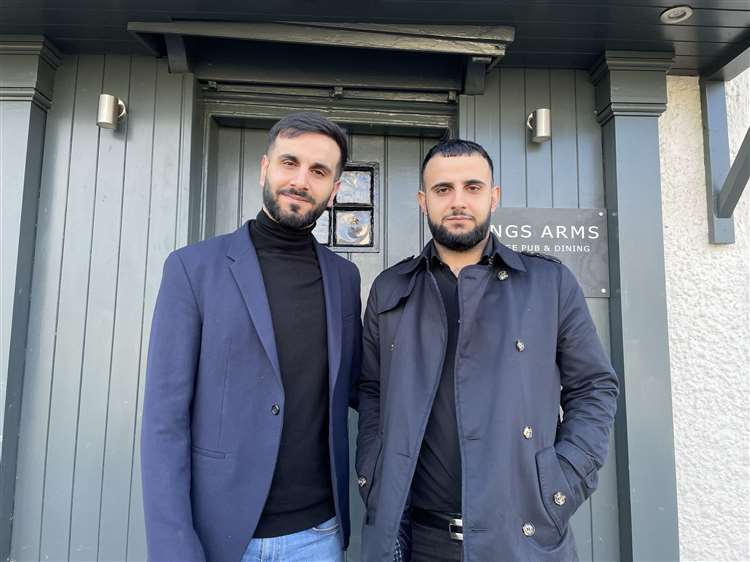|
From the Yorkshire Post, 22 July, 1930.
Machine Breaks in Pieces Over Village.
SIX OCCUPANTS KILLED.
Wreckage and Bodies Scattered Over Wide Area.
Four well-known Society people were killed, as well as two pilots, in an
air disaster at the Kent village of Meopham Green, near Gravesend,
yesterday. The victims were:—
The Marquess of Dufferin and Ava;
Viscountess Ednam;
Sir Edward Ward, Bart.;
Mrs. H. Loeffler;
Lieut.-Col. G. L. Henderson, the pilot; and
Charles Durban Shearing, assistant pilot.
The machine was on a taxi service between Le Touquet and London. Lord
Dufferin and Sir Edward Ward were the guests of Mrs. Loeffler. Lady
Ednam, whose husband is lying ill at Le Touquet, had accepted the offer
of a vacant seat in order to cross to London for a few days.
The cause of the disaster is a mystery. When flying over Meopham Green
in a rainstorm, the plane suddenly broke in pieces and the bodies of the
passengers and wreckage were scattered over a wide area. All were killed
instantly except Col. Henderson, who was still breathing when found
strapped in the pilot's seat of the broken fuselage. He died in a few
minutes.
The accounts of eye-witnesses differ as to whether there was an
explosion, although most of them speak of hearing a loud crash before
the wreckage began to fall. The mystery is deepened by the fact that the
petrol tanks have been found practically intact, and there is no sign of
fire.
It was revealed late last night that had there been room Colonel the
Hon. Walter Piers Legh. the Prince of Wales’s equerry, would have
travelled in the ill-fated 'plane. He was among the guests at Mrs.
Loeffler’s week-end party at Le Touquet, and as there was not room for
him in the ’plane crossed from the Continent by boat in the afternoon.
Considerable anxiety for his fate was felt until his arrival in London.
The Prince has often flown to and from Le Touquet over the week-end, and
has frequently been the guest of Mrs. Loeffler.
UNKNOWN CAUSE OF DISASTER.
Conflicting Evidence as to Explosion.
The cause of the disaster which overtook the machine over the little
Kent village of Meopham Green is a mystery. At one moment the
aeroplane—a large Junker monoplane operated by a British company—was
flying steadily through a rainstorm and the next the bodies of its
occupants and parts of the machine were being strewn over a large area.
Although a number of people saw the debris falling to the ground nobody
appeared to have actually seen the 'plane first get into difficulties.
The bodies of five of the occupants were found terribly mutilated in an
orchard nearly a quarter of a mile from where the main part of the
fuselage crashed. The sixth occupant, Colonel Henderson, the pilot, was
still strapped to the pilot’s seat. He was breathing, but died within a
few minutes.
The main part of the fuselage, with one wing attached, fell in the
garden of Cottage Meads, a little bungalow on the brow of a hill on the
outskirts of the village, embedding itself in the earth only three feet
from the back door.
PETROL TANKS INTACT.
The engine of the machine fell in the drive of Leylands, an adjoining
house, a wing fluttered down two miles away near the village at Harvel,
and the tail and one of the seats were picked up about 500 yards away
from Cottage Meads.
One extraordinary feature of the disaster is that when the wreckage was
examined later the petrol tanks were found intact. This and the absence
of any signs of fire are thought to rule out any suggestion of an
explosion in mid air.
The Gravesend police and the local police had the task of picking up the
scattered remains of the victims. The bodies were placed in a van and
taken to the "King's Arms Hotel" to await definite identification.
The machine belonged to the Henderson Flying Bureau, and had been lent
to Walcot Air Lines as the traffic from Le Touquet was particularly
heavy. She was an all-metal ’plane, and similar to the one that crashed
at Edenbridge recently. The ’plane was a Junker machine operated by a
British company.
Long after nightfall police and volunteers, under the direction of Air
Ministry officials, continued to search for debris over the surrounding
countryside, anxious to recover any fragments in the hope of finding
some clue as to the cause of the disaster.
EYE-WITNESSES’ STORIES.
“Fearful Crash” and Rain of Wreckage.
“I was in my garden at the time” she said to a reporter," and heard an
aeroplane coming over. Suddenly there wan a fearful crash, and looking
up I saw the air full of what for a second I thought were small
aeroplanes.
"Then I realised that there were bits of one machine and I turned and
ran for the house. Before I could get in I heard some dreadful thuds as
bodies hit the ground, and there was another smaller crash when
something fell on the root of my house. It was a terrible unnerving
experience.”
Mr. Gray, the occupant of Cottage Mead, described how after hearing a
crash he found the wreckage in his garden.
"I was in the house at the time and dashed out to see the wreckage in
the garden nearly on top of the house. With help I extricated the pilot
and he was carried into the house, but was beyond aid.”
WRECKAGE RAINING DOWN.
"I at first thought it was a Moth aeroplane coming down," was how Mr. C.
Hogg, of Lower Farm, described the falling of the Junker's wing.
“I was on the farm,” he continued, "and saw a small aeroplane going
over. I remarked to my brother that perhaps it was one of the machines
in the round Europe race. A couple of minutes later I heard another
machine in the clouds, and remarked, "Here’s another of them." I had
hardly got the words out of my mouth when there was a crash, and pieces
of wreckage were raining down. Besides the wing I saw the engine
falling, and other pieces coming down as well."
Mr. F. Moore, son of the proprietor of the "King’s Arms Hotel," Meopham
Green, heard a crash, and rushed into the street in time to see the
fuselage fall into the garden of Cottage Meads.
"I dashed up the road, and found that the pilot was still in his seat in
the wreckage," Mr. Moore said. "He was just breathing, but died in a few
seconds. Then we commenced the heartrending task of picking up the
victims and taking them back to my father’s hotel. I have never seen
such a ghastly sight in my life. Parts of the bodies were strewn in all
directions.”
FALLING LIKE LOGS.
Mr. James Howart, who lives at Harvel, two miles from the scene of the
accident, said: "My wife and I were sitting in the front room of our
bungalow when we heard the sound of a ’plane engine. My flying
experience told me that something was amiss, but the low-lying clouds
prevented me from seeing what the trouble was.
"Suddenly there was a dull thud and something which I afterwards
discovered to be one of the wings of the ’plane crashed into a field
near-by.”
Mr. Thomas Hildern, who lives in the village of Culverstone, said:
"While I was cycling along the road near Meopham Green I heard a sound
like a machine-gun. I looked up but could see nothing because of a thick
drizzling rain. Suddenly a ’plane seemed to drop out of a low cloud and
the engine parted company with the fuselage.
"The body of the machine carried on for about a hundred yards before it
dropped like a stone. It was terrible to see the bodies of the victims
falling like logs from the machine just as the engine fell out.”
WOBBLING BADLY.
Mr. W. Parsons, a grocer and stationer, of Meopham, said that as the
’plane approached he saw from the street that it was wobbling badly.
"The ’plane had passed over when there was an explosion—not a very loud
one,” he said, "immediately pieces of wreckage and what looked like
little aeroplanes came floating down. We did not realise then that they
were bodies.”
Miss W. J. Newall, of Meopham, described the noise before the machine
fell as "a terrific roar.” Then there was a crash, and the gardener
rushed in to say that a 'plane was down near Meopham Green.
Dr. Goldenberg, a retired surgeon, said while in his house about three
o'clock he heard a terrific crash, and running out saw bits of an
aeroplane lying in the field.
"There was a wing and a large piece of the body of the machine, and the
pilot was covered with a large piece of fabric. By the time I got to him
he was dying,” said Dr. Goldenberg. "He passed away in ten minutes. My
niece saw the whole affair. She says that the aeroplane broke in pieces
in the air, and the different portions crashed to the ground.”
BODIES IDENTIFIED.
Relatives’ Sad Journey to Village.
There were pathetic scenes when relatives and friends of the six victims
of the crash arrived at Meopham Green in the evening to fulfil the sad
task of identifying the bodies.
They were taken by sympathetic police officers to the hut where the
bodies were lying, and as a policeman unlocked the door two women in the
party broke down. They were too grief-stricken to enter and stood
outside overcome.
General Cannot and the other men enlarged a few moments later. Before
the party left a police officer brought out some stained and torn
clothing which one of the women identified.
The news of Sir Edward Ward's death was broken to his aged mother, Lady
Ward, by Commander Ward, her other son. Commander Ward was informed of
his brother’s death while at business, and immediately left for Meopham.
Sir Edward Ward's valet also went to Meopham to identify the body. He
had been at Le Touquet with Sir Edward, but travelled back by train and
boat.
THE PILOT’S WIFE.
One of the tragic features of the disaster is that in the morning, only
a few hours before the crash, Mrs. Henderson, the pretty young wife of
the pilot, flew with her husband from Le Touquet in the ill-fated
machine. Captain Henderson then returned to France to pick up the party
who were the victims of the tragedy.
Mrs. Henderson heard of the disaster in London and immediately rushed to
Meopham Green by car. Friends, who accompanied her, kept her in
ignorance of the fact that her husband was dead until some time after
her arrival.
Mrs. Henderson seemed too dazed to realise the magnitude of the disaster
and that her husband was dead. She walked down the narrow lane to
Cottage Meads and stood for a time gazing at the crumpled fuselage.
Lady Veronica Blackwood, the daughter of the Marquesas of Dufferin, left
for Meopham shortly after the family had been informed of the tragedy.
The Marchioness, who had remained in England while her husband had gone
abroad for the week-end, is overcome with grief.
Throughout the night a detective kept a lonely vigil outside the hut
which served as a mortuary. Before he took over his duties there were
others to visit the place. Among them were the Duke of Sutherland, a
brother of Lady Ednam, and Lord Londonderry. They entered the hut with
the fathers of the two pilots. The only woman to see the remains was
Miss Loeiffler.
|
